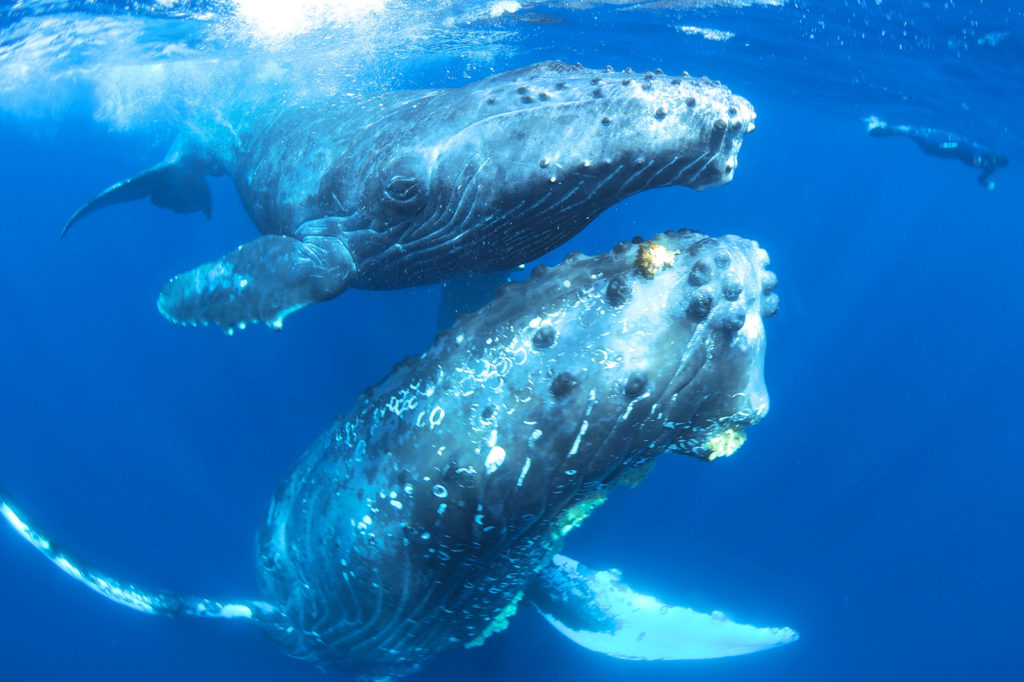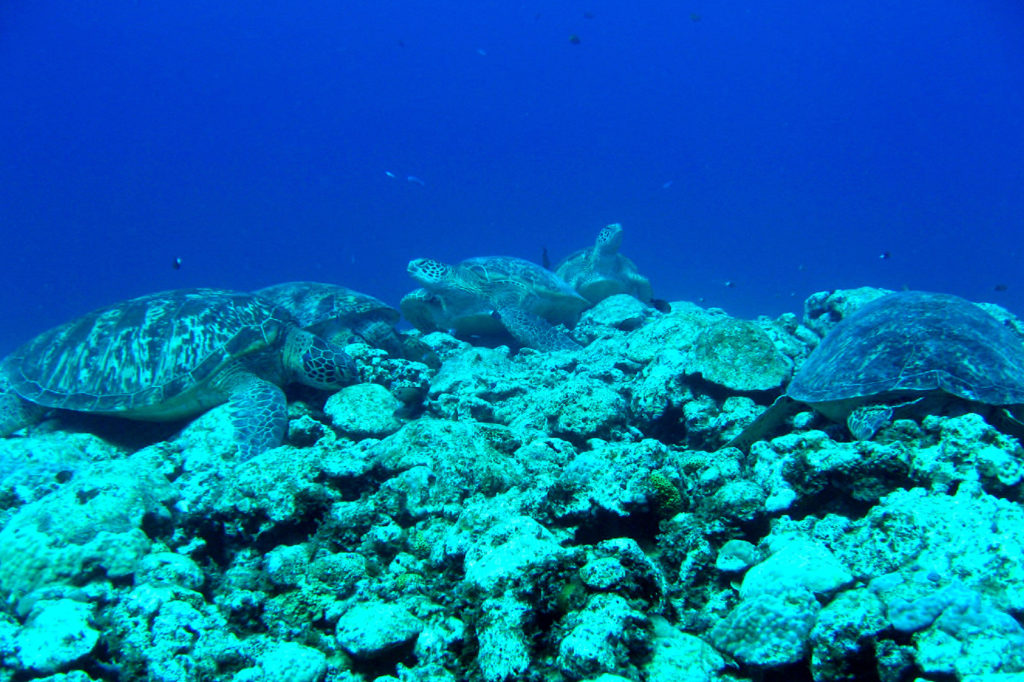
Amami's Sea Creatures
Shells in the Amami Archipelago
The Amami Archipelago is a treasure house for shells
The Amami Archipelago is a treasure house for shells
There are approximately 11,000 kinds of shells that exist in the entire world, of which about 10,000 live in Japan. Along the coastal waters of Amami, about 3,000 species are said to inhabit. The warm kuroshio (black currents) flowing in the southern part of the Japan Archipelago significantly impacts the waters in Amami and Okinawa, making the waters in the southern Amami tropical. Consequently, Amami hosts numerous species of tropical fish and tropical shell in this region.
Explanation: Hiroo Shigeta, Association for Nature in Amami
Shells excavated from archeological sites
About 50 species of Imo-gai(cone shells) are frequently found in the atolls around the Amami Archipelago. According to the evidence found in archeological sites, Anbon-kurozame-gai(lettered cone) were possibly the most treasured shell as a symbol of financial standing and power in ancient times.
Ruins from the time comparable to the Jomon period[c.1400-300 BCE], Ootsutanoha-gai(Pectinodonta flexuosa optima), Oobekkougasa-gai(Cellana testudinaria), Takara-gai(cowrie), Shako-gai(giant clam), Yakou-gai(great green turban), Go-houra-gai(Strombus latissimus) were unearthed. These shells were used as ornaments and contributed in expanding the shell-culture. Along with obsidian found in Kyushu, shells were treasured as articles of commerce.
During the time, equivalent to the Yayoi period[300 BC – 300 AD], Goboura-gai(Strombus latissimus) and Imo-gai(cone shell) were principally made into bracelets. It is considered that these bracelets were used to demonstrate one’s power and prestige.
A large volume of Yakou-gai(great green turban) were excavated in Matsunoto and Fuwaganeku archaeological sites. It is speculated that these shells were also used as trading items between the Mainland China and Japan.
Explanation: Kiyomi Nakamoto, former director of Amami Museum
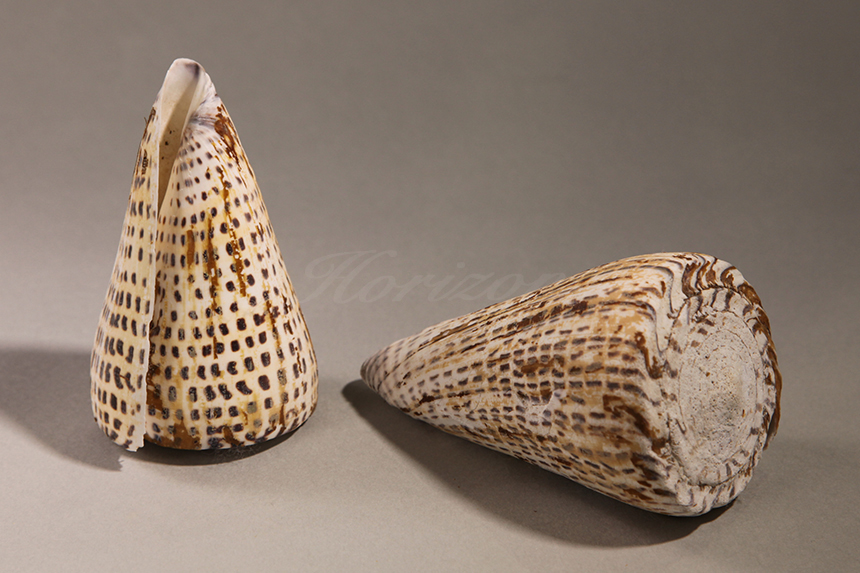
Anbon-kurozame-gai(Lithoconus litteratus): This large-sized shell was often used as ornaments by prehistoric and ancient people. Largely existed around islands of Amami and Okinawa.
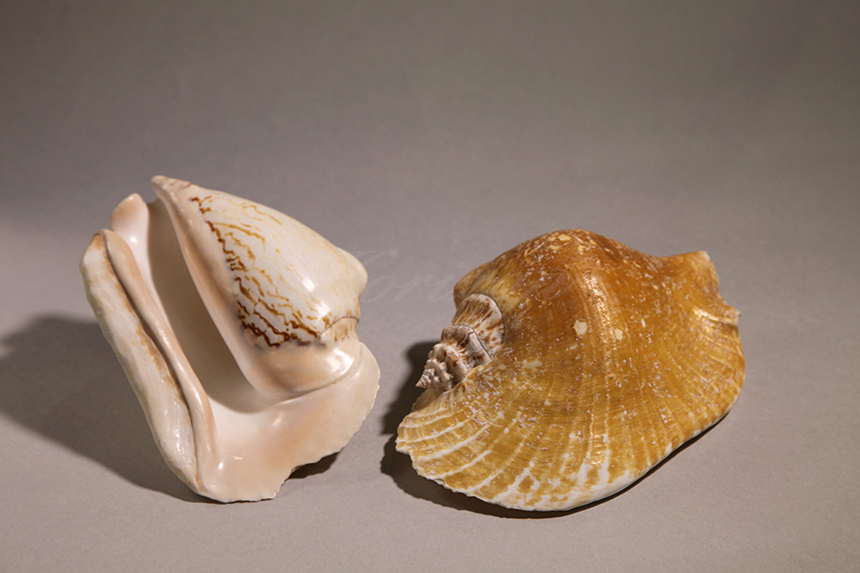
Gohoura-gai(Strombus latissimus): Inhabited from the tropical western Pacific Ocean, south of Amami Oshima to the Indian Ocean. In Amami, during the concurrent Yayoi period[300 BC – 300 AD], the shells were made into bracelets.
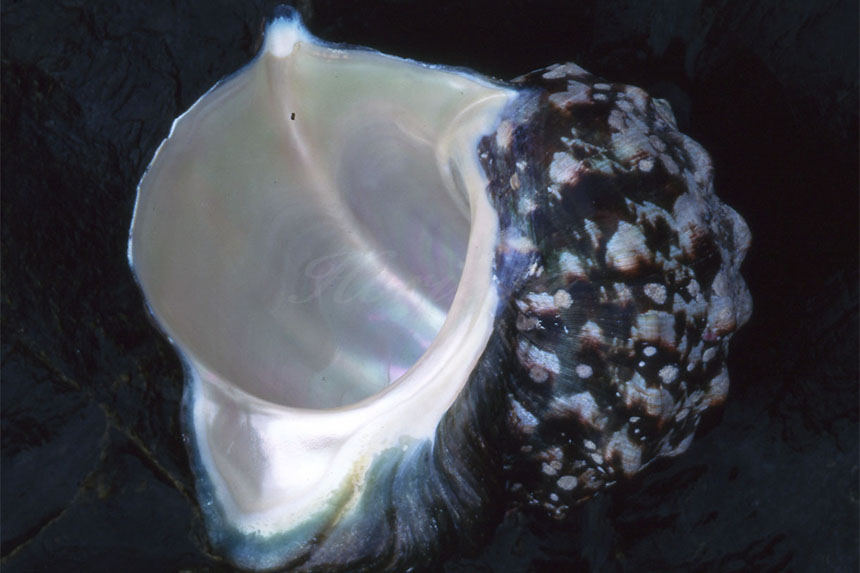
Yakou-gai(Turbo marmoratus): Inhabited in south of the Amami Archipelago and in the tropical Pacific region. During the Heian period [794-1185], the Yamato(the Mainland Japan) revered the shell as a religious symbol. Aristocrats in the Heian period sought after these Yakou-gai(Turbo marmoratus) from the south islands.
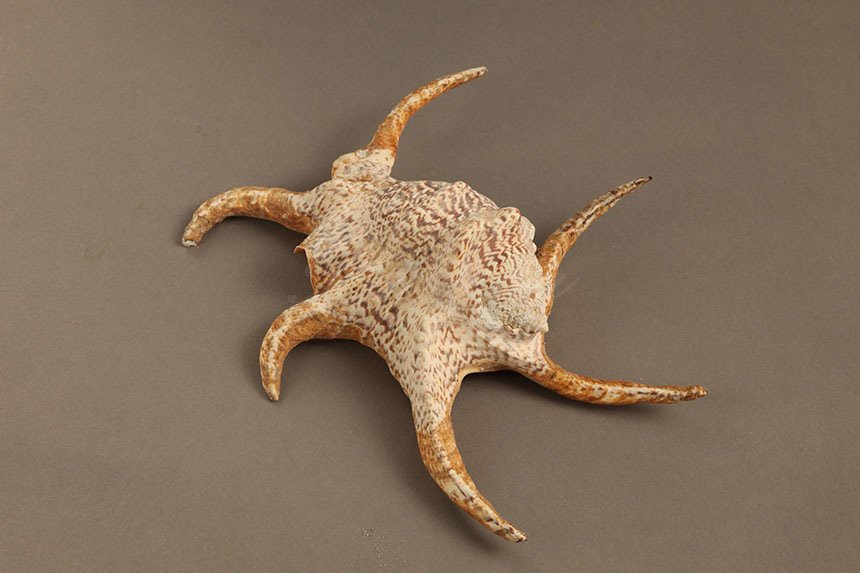
Suiji-gai(Harpago chiragra): It has six spikey protrusions which resembles the Chinese character 水(water); thus the shell was used as a talisman against fires or an amulet.
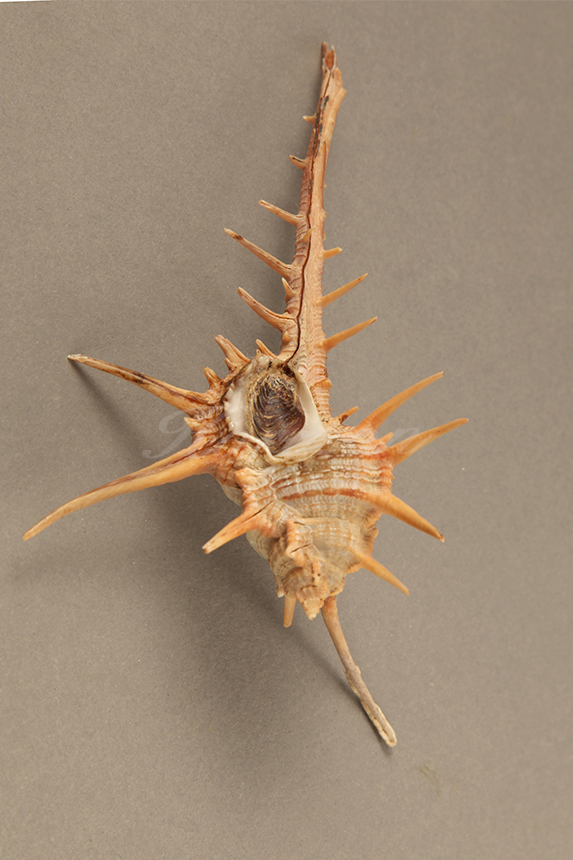
Enmano-hone-gai(Murex tenuirostrum): It was only in the Amami Oshima that this shell was discovered to exist. A species of Hone-gai(Murex pecten), which is a very rare species. It is said that Enmano-hone-gai(literally means, devil’s bone shell) was so named because it has numerous fierce-looking spikes.
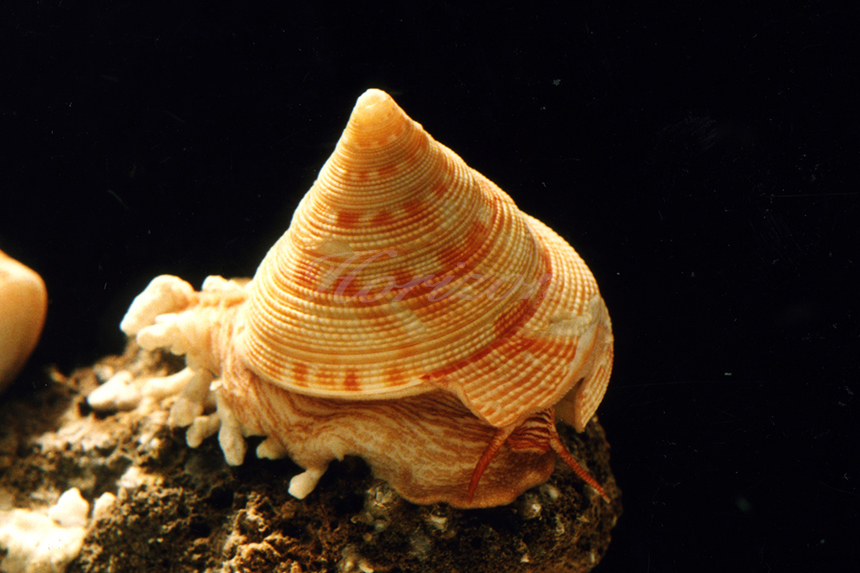
Okina-ebisu-gai family(Pleurotomariidae): It is called as a living dinosaur and lives in more than 100 meters below the water surface. Twenty-six species and subspecies were identified in the world, of which seven species exist in Japan, and four of them have been discovered in the waters of Amami (Ryugu-okina-busu-gai[Entemnotrochus rumphii], Koshidaka-okina-ebisu-gai[Mikadotrochus salmianus], Beni-okina-ebisu-gai[Mikadotrochus hirasei], Goto-okina-ebisu-gai [Mikadotrochus gotoi]).
Explanation: Yasufumi Arima, Association for Nature in Amami
Photos: Horizon Editorial Office


